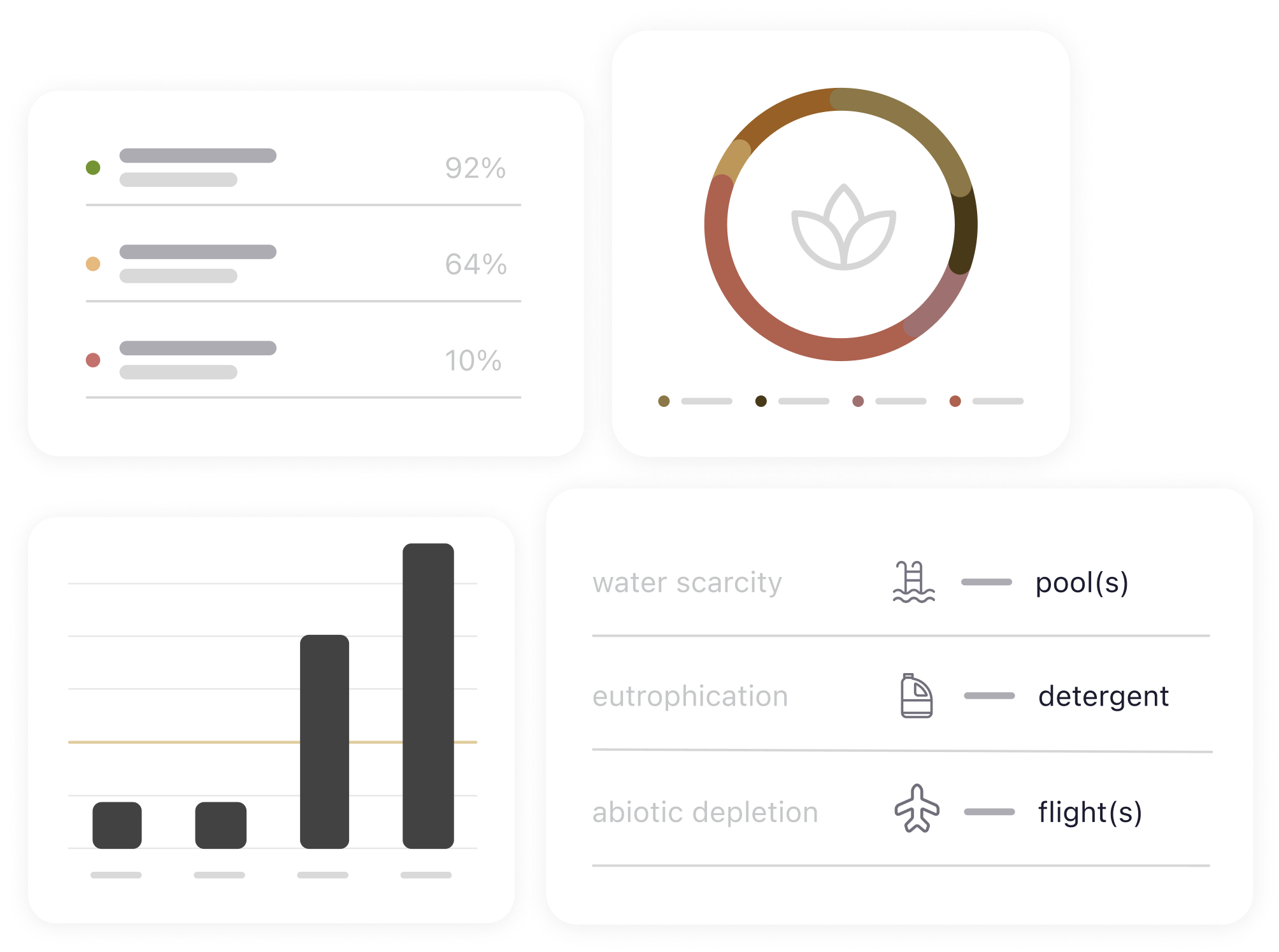With the increase in consumer demand for more sustainable products, greenwashing in the fashion industry has multiplied in recent years. What some time ago could have been considered a simple claim, today it’s closely examined by consumers and experts. At BCome we know that sometimes it can be complex to communicate the sustainable performance of your business, so we want to share with you 7 examples of greenwashing that your company could be making unintentionally. Take note and discover how to avoid them.
It’s no longer enough to look sustainable, now the time has also come to prove it
The debate is on the street, what credibility do commercial messages that refer to the sustainable features of a product have? The growth of increasingly informed consumers and the rise of sustainability in the fashion industry has translated into an increase in accusations of greenwashing. The industry must know this, it’s no longer enough to look sustainable, now the time has also come to prove it.
The adjective “sustainable” is beginning to lose force and professionals in the textile sector are concerned about the loss of meaning that has resulted from the proliferation of misleading claims that harm those brands that are truly making an effort to improve their sustainability performance. The experts demand measures that limit those brands that, far from seeking an authentic transformation of the sector, only make use of the sustainable imaginary for their economic benefit.
The need to learn to differentiate from those who use the concept of sustainability in vain is imperative
The refinement of greenwashing practices has gone so far that the European Commission is planning to take action. The Circular Economy action plan contemplates a legislative proposal for substantiating green claims made by companies, so that these are corroborated through a standard methodology as well as, using methods that follow the PEF recommendations.
Although the new legislative measures seek to improve the trust placed by consumers in products with sustainable features, one of the biggest concerns of industry professionals lies in the effect that these laws will truly have on the biggest players in the textile sector. The need to learn to differentiate from those who use the concept of sustainability in vain is imperative.
Below we show you 7 greenwashing examples to ensure that your business doesn’t make any of these mistakes when communicating the features of its products:
1. Omission of relevant information
“Discover our new XXX made from recycled plastic waste“
This claim implies that the entire product is made from recycled plastic. However, if we were talking about a shoe in which the only recycled part was the sole, this statement would be wrong, since it would be omitting the actual application of the recycled material in the product.
- Tip: Avoid misleading consumers and provide information on all product characteristics, from the origin of the materials to the indications for use and disposal.
2. No evidence
“Our AW22 collection has used 20% less water than the industry standard“
Why should your consumer believe that the information provided is real if you aren’t showing the source of your data? Remember that we live in difficult times in which it’s common to find figures that aren’t supported by reliable methodologies. If your products have been assessed, communicate transparently which is the third party that verifies that this data is authentic.
- Tip: Support your data by communicating what criteria or methodologies have been used when analyzing the sustainable performance of your business. Publish the figures with the entity that validates the published information.
3. Use of confusing terms
“Thanks to the use of eco-friendly materials, this is our most sustainable collection to date“
Using abstract terms that don’t have a direct meaning such as “eco-friendly”, “conscious”, “responsible”, “green” is a way of misleading the consumer. Statements must be clear and unmistakable. Using ambiguous concepts that give the impression that a product is more sustainable will have a negative impact on the brand image.
- Tip: Write the claims of your business with transparency so that they can be easily understood by consumers. Show that you have nothing to hide.
4. Use of an imaginary close to sustainability
“We present XXX, our new category that shows our commitment to sustainability“
When we see businesses that create their own labels to tag certain products in their collection as “sustainable” but without external support, the categorization of those products is worthless. Once again, it isn’t enough to identify your product as sustainable, this must be proven.
- Tip: avoid the creation of your own universe to talk about sustainability and demonstrate through external mechanisms that your products have the right characteristics to be qualified as such.
5. Distraction with secondary benefits
“We are now more sustainable, all our shipments are made free of plastics”
This statement could be right, however, if the only sustainable effort of your fashion business is focused on the packaging of your shipments, perhaps you are trying to take advantage of the adjective sustainable to link it to the rest of your products when they have no relation.
- Tip: Be honest with your audience and don’t try to use a single feature of your business to extend it to the rest of your brand. Sustainability is a long-distance race, don’t pretend to reach the goal before starting.
6. Not contemplating the entire product life cycle
“We generate less CO2 than our competitors because we manufacture in local factories“
This claim is assuming that the life cycle of the competitor’s products is the same except for the location of production. It doesn’t contemplate the origin of the raw materials of both articles, as well as the comparison of the rest of the stages through which the garment has passed until it reaches the store.
- Tip: Consider the full lifecycle of your products when making comparisons. Ensure that the impacts of your items have been calculated taking into account all stages of the supply chain and make fair comparisons.
7. Misinformation disclosure
“All our garments are made from natural yarns, so we only use organic materials“
This statement isn’t true, since the fact of working with natural materials doesn’t imply that they are organic. Sometimes, the lack of knowledge results in false claims that, despite not being maliciously formulated, are misleading the audience.
- Tip: If sustainability isn’t part of your expertise and you fear communicating wrong information, surround yourself with professionals who can support you when developing your commercial messages.
At BCome we are faithful advocates of following the principles of honest marketing to transparently communicate the sustainable performance of your business. We put at your disposal our technology to beat greenwashing. Find out how your business can use our tools to strengthen its communication strategy. Shall we talk?






